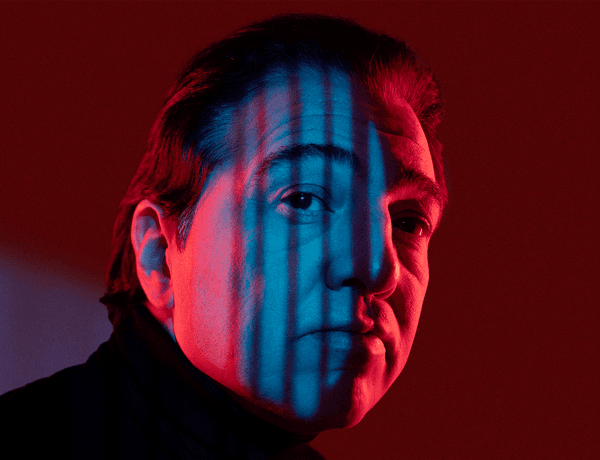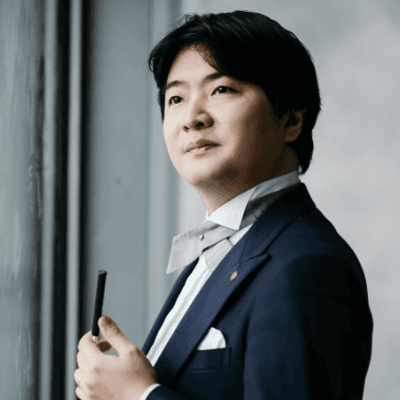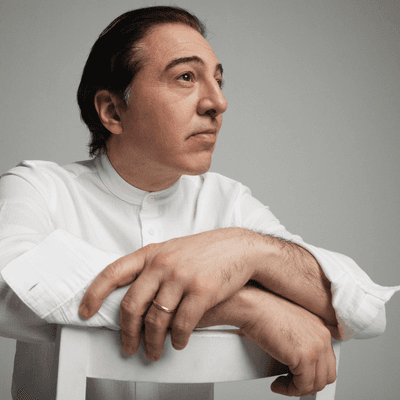Kazuki conducts Rachmaninoff

Full programme
- Prokofiev, Symphony No.1 (Classical) (15mins)
- Saint-Saëns, Piano Concerto No.2 (23mins)
- Rachmaninoff, Symphonic Dances (35mins)
Performers

Kazuki Yamada
Conductor
Fazil Say
Piano
Programme Notes
© Richard Bratby
Prokofiev meant his Classical Symphony as a musical joke – but it turned out to be a classic. Rachmaninoff’s Symphonic Dances began as a dream ballet, and they’re filled with all the energy and emotion you’d expect from a true master of melody. And Saint-Saëns’ Second Piano Concerto begins with a prayer and ends in a knees-up!
Classical Symphony, Op.25
Sergei Prokofiev (1891-1953)
I Allegro con brio
II Larghetto
III Gavotte: Non troppo allegro
IV Finale: Molto vivace
In the summer of 1917, as revolution roared through the streets of Petrograd, the young composer Sergei Prokofiev was in a world of his own. He looked back to the 18th century and decided to compose…well, not quite a symphony in the style of Haydn. “It seemed to me that if Haydn still lived in our day he would have kept his own character, while accepting something of the new at the same time” he explained, years later. “That was the kind of symphony I wanted to write.”
Did he succeed? Well, if you expect 18thcentury imitation, then it’s not a “classical” symphony in that sense. If, on the other hand you understand “classical” as meaning two outer movements in crisp sonata form framing relaxed but exquisitely-crafted central movements (one of them a dance), Prokofiev is spot-on – he’s even got the trademark classical opening flourish.
But like a good revolutionary he smashes classical rules with gleeful abandon (classical symphonies, for example, are supposed to have a graceful Minuet, not a deadpan Gavotte). The whole thing fizzes away with unstoppable energy and wit. “When I saw that my idea was beginning to work” recalled Prokofiev, “I called it the Classical Symphony; in the first place, because that was simpler, and secondly, for the fun of it, to ‘tease the geese’ - and in the secret hope that it really would turn out to be a classic”. He needn’t have worried on that score.
Camille Saint-Saëns (1835-1921)
Piano Concerto No.2 in G Minor, Op.22
Camille Saint-Saëns (1835-1921)
I Andante sostenuto
II Allegro scherzando
III Presto
Camille Saint-Saëns was French music’s ultimate all-rounder. In a musical career that lasted over 70 years, he did it all: virtuoso pianist, teacher, conductor, founder of music societies, globetrotter and wit. He even composed the world’s first film score. “I live in music like a fish lives in water”, he said, adding that he composed music “like a tree produces fruit”. And how: he composed so many pieces (over 300 in total) that it can be hard to know what to listen to first.
His Second Piano Concerto is as good a place as any. From 1858 to 1877 he was organist at La Madeleine, the most fashionable of Paris churches, where he was expected to improvise as a matter of course (always a useful skill for a musician in a hurry). And in 1867, he’d conducted the orchestra when the great Russian pianist Anton Rubinstein had played at the Paris Exposition in one of his own concertos. They’d hit it off, and when Rubinstein – who fancied himself as a conductor –returned to Paris the following spring, he had an idea: how about if he conducted, and Saint-Saëns played the piano in a new concerto of his own?
Saint-Saëns was more than game – and since Rubinstein had booked the Salle Pleyel concert hall for a date just three weeks away, he knuckled down. He wrote his Second Piano Concerto in just seventeen days, and gave the first performance (with Rubinstein conducting) on 13th May 1868. To the listeners, it sounded, at first, as if he was making it up on the spot. He lays down a chord and runs his fingers across the keys as if beginning an organ prelude at La Madeleine. But like every great improviser, he knows exactly where he’s going, and when the orchestra enters – with a majestic chord – he launches a sweeping introductory slow movement. “The music catches fire” wrote the critic Baumann, “and an immense virtuoso passage gushes forth, like the arc of a rainbow”.
In the second movement, Saint-Saëns releases all that tension in a brilliant, bouncing scherzo. The timpani set the rhythm and the piano scampers back and forth; it’s as witty as the first movement is grand, with a swinging, irresistibly catchy second tune that starts on the cellos but soon spreads through the whole orchestra. And then, after grandeur and grace, it’s time for speed. The finale roars, then hurtles off in the whirlwind tempo of a tarantella. Critics were baffled. Referring back to that organ like opening, one wrote that the concerto “began as Bach and ended as Offenbach” (the composer of the notorious Can-Can). But audiences knew a good thing when they heard it. “It is possible to be as much of a musician as Saint-Saëns” remarked Franz Liszt “but it is impossible to be more of one”.
Symphonic Dances, Op.45
Sergei Rachmaninoff (1873-1943)
I Non allegro
II Andante con moto
III Lento assai – Allegro vivace
“The whole world is open to me, and success awaits me everywhere” said Sergei Rachmaninoff to a journalist in 1930. “Only one place is closed to me, and that is my own country – Russia.” When he fled the Russian Revolution in December 1917, he possessed just 500 roubles and a single suitcase. But a friend had pointed to Rachmaninoff’s huge, long-fingered hands: “Those are your exchange rate”. For the rest of his life, Rachmaninoff would make his living as a pianist. He did well: in 1931 he built his family a villa on Lake Lucerne, and bought a speedboat. When the Second World War forced him to relocate to the USA, he settled in Beverly Hills, not far from where another Russian exile Igor Stravinsky was living. He walked over to visit him, carrying a pail of honey: like an old Russian countryman visiting a friend.
Meanwhile he struck up a close relationship with the Philadelphia Orchestra and its conductor Eugene Ormandy. With its silken strings, it was probably the USA’s finest orchestra at the time. On 21 August 1940 he wrote to Ormandy that “last week I finished a new symphonic piece, which naturally I wanted to give first to you and your orchestra. It is called Fantastic Dances”. By the time it was premiered on 3rd January 1941, he’d settled on a different name – Symphonic Dances. It was, he announced, “my latest, and I think my best composition”.
He had no idea at the time that it would be his last. He initially gave the three movements titles -“Noon”, “Evening” and “Midnight” – but you don’t need to know that to sense the atmosphere of mystery, melancholy and defiance that saturates this music. The first dance opens quietly: the first loud chords are almost savage, sending the music motoring along. But at its centre lies a long, sad melody: as Russian as they come, but played by that supreme jazz instrument, the saxophone (this was America, after all), and only afterwards taken up by the strings plus Rachmaninoff’s own instrument: the piano. And just before the dance ends, the music hushes for a strange, sweet apparition, surrounded by twinkling bells. We know now what no-one except Rachmaninoff knew then: that it’s a quote from his own First Symphony, which he believed had been lost forever in the Russian Revolution.
The Symphonic Dances are full of musical ghosts. In the second dance, a lush, eerie waltz that stops, starts, and swirls languorously across the twilit sky, the whole piece seems almost to take on a phantom quality. That same melancholy languor keeps interrupting the final dance: but the tolling bells make it clear that there’s no time to dream. The music dances on, frenetically, sometimes violently: the old Catholic death chant Dies Irae (a lifelong obsession for Rachmaninoff) stalks it bar by bar. But as the music gathers confidence you don’t have to know that the brisk new theme that Rachmaninoff introduces at this point is an ancient Russian orthodox chant. Or that, when it makes its final entry, he wrote the word “Alliluya” in the score.
Featured image © Fethi Karaduman